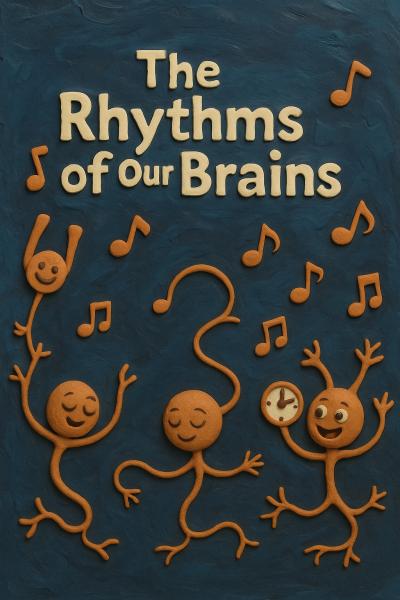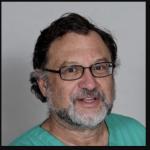
“Building on principles such as resonance, stability, attunement, and strong anticipation, we propose that people anticipate musical events not through predictive neural models, but because brain-body dynamics physically embody musical structure.”
Imagine sitting in a concert hall as the opening strains of a symphony wash over you. You feel an almost reflexive urge to sway, a toe begins to tap, and before long, your pulse aligns with the orchestra’s beat. This everyday experience may owe far more to our biology than we’ve realized. Neural Resonance Theory (NRT) grounds musical expectancy in physical laws governing how our neurons oscillate, couple, learn from experience, and transmit information with tiny delays.
Music is not the result of some “all-knowing” internal predictor; it is embodied by the brain, rooted in the physical dance of neural oscillations tuned by both physics and culture. This framework helps explain how we effortlessly feel the pulse, infer the underlying harmony of a melody, and even get that irresistible urge to “groove.”
Individual neurons generate rhythmic voltage fluctuations due to the interplay of ion channels opening and closing on characteristic timescales. Groups of excitatory and inhibitory neurons can form coherent oscillations, brain-wave rhythms, the collective dance of billions of neurons whose frequencies depend on cellular time constants and the strength of synaptic feedback. These delta, theta, alpha, beta, and gamma oscillations are the “timing scaffolds” on which perception, action, and cognition are built [1]. The early evidence for NRT came from studies demonstrating that events falling on the internal beat of our neurons captures our attention more vividly than off-beat surprises.
The Physiologic Pillars of Musical Resonance
NRT models the auditory-motor system as a network of tiny, self-sustaining clocks that can lock onto incoming frequencies, interact with one another, and learn from experience. Four core principles explain how this machinery gives rise to our felt experience of music.
- The perception of notes is fuzzy; neurons lock into a range of frequencies, creating related groupings that we call octaves and harmonics.
- Our neurons preferentially lock into simple integer relationships (1:1 or 2:1), the ratios that underlie danceable rhythms. More intricate ratios create tension.
- These neural oscillators learn from experience, as the neurons that “fire together, wire together,” a phenomenon more formally termed Hebbian learning. Over time, this process shapes the cultural flavors of rhythm and harmony you come to expect and enjoy.
- Our brains smooth out the tiny timing delays amongst these neurons, making you anticipate the beat, letting those “taps” land slightly before the sound actually arrives
Rhythmic Timescales: From Foot‑Tap to Dance Floor
Music unfolds over multiple timescales, but the heartbeat of rhythm—the pulse of your tapping foot—sits around 90–150 beats per minute. NRT proposes this pulse emerges from the brain’s delta frequencies (the delta‐band neural oscillator), allowing us to perceive a clear, memorable groove. Off-beat accents, the syncopation of a samba groove, energize us as our brain fills in the “missing pulse,” creating a steadier beat. However, if the off-beat syncopation is too great, our brains cannot smooth the timing, leaving us adrift and highlighting how deeply our brains embody, rather than forecast, the beat. From swaying in a church choir to tapping along in a jazz club, our movements reflect the underlying dynamics of coupled oscillators, locking us into the pulse.
Tonal Timescales
Deep within our ears, outer hair cells and auditory‑nerve fibers synchronize to incoming waves, their fuzzy reception generating harmonics and different tones that never existed in the original sound. The brainstem mirrors the physical frequencies of a tone and the extra ones our oscillator networks predict. Through a process called mode‑locking, they generate harmonics and different tones that our cortex stitches into a cohesive perception of pitch. Mode‑locking describes what happens when two or more neural oscillators (think of them as tiny vibrating clocks) interact. Each becomes coupled so that they tick at a fixed ratio and constant phase relationship. In a stable 1:2 relationship—each time the slower one ticks, the faster one has ticked twice.
In auditory and neural systems, this locking enables the ear and brainstem to amplify specific harmonics and integrate them, resulting in our perception of consonance and stable beats. The relative stability of these resonant states explains why some tones and rhythms feel like “home.”
Melody and Tonal Structures
Melody, the thread of high and low tones (pitch) over time, emerges when successive notes synchronize in stable integer relations. As you hear two tones in succession, your brain’s network sustains the memory of the first tone even after it ends, then locks onto the second. When their frequencies form a simple ratio, they attract other neurons, creating stronger, more stable memory traces. Researchers have shown that perceived tonal stability neatly aligns with the strength of resonance in oscillator networks: the more stable the frequency relationship, the stronger its pull on our expectations.
As notes are heard, they hint at chords that aren’t played—a phenomenon known as implied harmony. Neural models demonstrate that oscillators tuned to chord tones keep resonating long after their notes have stopped, while those tied to non-chord pitches are quickly suppressed. This melodic attraction explains why listeners, from infants to adults, distinguish consonant intervals more readily than dissonant ones.
Melody and tonality emerge not from abstract rules but from the physiology of our neural oscillators.
Culture Meets Biology: The Resonant Conversation
NRT reconceives music not as symbolic “processing” by the brain but as an emergent property of our biology. Neurons that literally vibrate in time and tune to pitch sculpted by both physics and experience. Cognitively, rather than positing ethereal “prediction engines,” it grounds musical expectation in physical resonance and simple stability ratios, offering a simple account of everything from why a 3:2 interval feels so satisfying to how a samba’s “missing pulse” still propels us to move.
While NRT places music squarely in the domain of physics and biology, culture provides fine-tuning and diversity. The same biology underlies both Gregorian chant and electronic dance music; what differs is the history of what our neural oscillators have heard. Through repeated exposure—be it Hindustani raga, Balkan dance rhythms, or New Orleans jazz—our brains develop the connectivity that favors certain resonant states over others.
By uniting the physical, the learned, and the communal, Neural Resonance Theory reframes music as a conversation between our neuronal clocks and the cultural patterns they learn to echo—showing that every dance step, every chord progression, is ultimately a celebration of our brain’s capacity to resonate and integrate with the world.
In an era when artificial intelligence can compose convincing music by statistical mimicry, NRT reminds us that human musicality is not software, but a living orchestra of neural oscillators honed by evolution and culture. From the infant’s first swaying to tribal chants around a fire, from Beethoven’s symphonies to electronic clubs pulsing at dawn, music endures because it resonates with the very rhythms of our brains.
[1] Slower waves (delta, 1–4 Hz) often reflect widespread cortical–thalamic coupling and deep‑sleep processes; mid‑range rhythms (theta, 4–8 Hz; alpha, 8–12 Hz) arise in structures like the hippocampus and sensory cortices during memory, attention or relaxed wakefulness; and faster beta (12–30 Hz) and gamma (>30 Hz) oscillations usually reflect local cortical processing and the rapid coordination of inhibitory interneurons.
Source: Musical neurodynamics Nature Reviews Neuroscience DOI: 10.1038/s41583-025-00915-4



